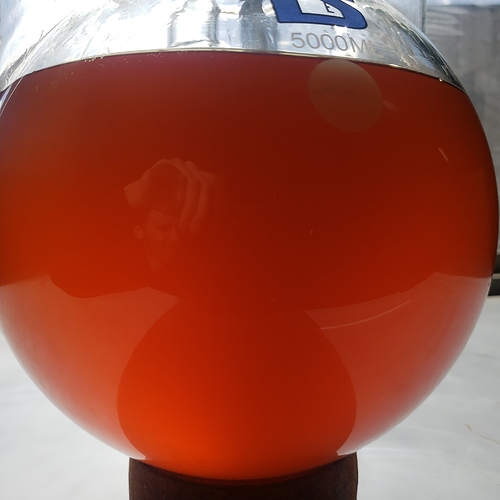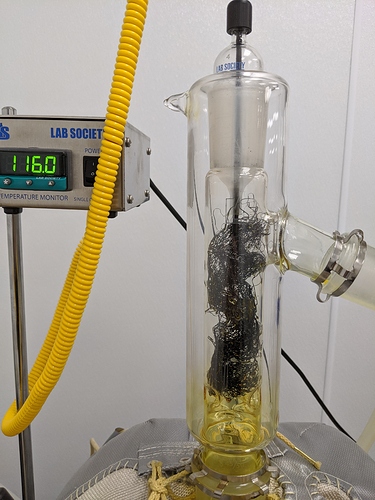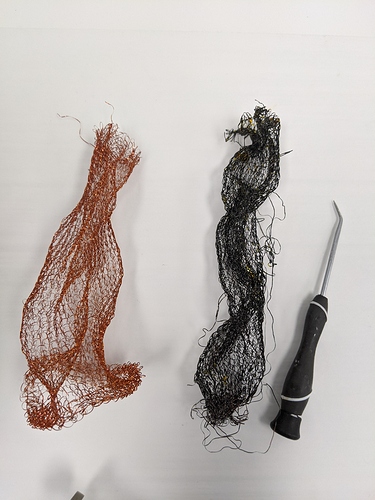I might be looking in a completely wrong direction, but would copper chromite be a possible catalyst for producing CBN? I know it can be used to dehydrogenate alcohols, but alcohols are a much more simple molecule so I’m not sure it would work the same way on THC. It looks like hydrogen gas is the only byproduct made, and it can be reused.
Great info! Thanks for the contribution. Open Source is the future of the cannabis industry. Education is the only way we can fix all these crazy things going on. Everyone needs to swallow their pride and ego and work together for the future of this industry and the future of the patients.
I do not believe so, copper chromate is specific to alcohols and performs an oxidative dehydrogenation to form the corresponding aldehyde or ketone.
Sulfur does this dehydrogenation process a bit different.
Thanks for the info… looking at a ~20% yield. However it comes out clean, which can be a problem with other methods. Purification can be difficult without decent equipment. With this procedure you can crystallize and recrystallize.
There are procedures that use various Palladium (Pd) catalysts and an oxidant such as benzoquinone or molecular oxygen. There is some potential there.
You should be doing a full clean up on any cbn thats made no matter what catalyst is used
Heres my cbn
Nice! I’m getting the exact same color. They claim you can get white crystals from it. Others say pink. Will be interesting to see.
How do you setup and run the ln2 gas trap
H2S is a stronger acid than water. Sodium Carbonate scrubber will take the gas out of the escaping affluent trapped as sodium sulfide. I would def. still run in a hood with an industrial blower. H2S smell is quite terrible besides it being polytoxic chemical.
The mighty bentonites are also good H2S traps.
what would be the best way to get rid of the residual sulfur left over? I find that I can’t hit the proper vac levels with having it in my oil while distilling. I saw the GLG sop saying to break down in solvent then filter through T5, T41 and silica, rotovap and then distill. Does anyone know if this is a viable way?
If you have a packable distillation head and your first pass is terrible anyway, just pack the head with copper and then do all of that filtration stuff. Here’s a sulfur remediation from an unknown contamination source. Others have suggested copper powders in heated solvent too.
You think that packing the head with the copper scrubbie would allow for lower vac levels? I am contemplating liquid nitrogen for the cold trap to drop vac levels more. I can’t get lower than 1500 micron at the moment so was hoping the possible filtration then liquid nitrogen would get me into appropriate micron levels like 600 microns.
No, it’s going to inhibit the path and make your poor distillation even worse. But it will capture at least part of the total sulfur and allow further runs to be done better.
What about molecular sieves 4A to pull the sulfur? do sieves capture cannabinoids?
Sounds like you have a leak to me, plus lle will definitely help with sulfur along side carbon palladium. But yes pack the head with copper mesh scrubber( thoroughly cleaned) then run but FIND YOUR LEAK! You should be well below 100 microns.
Any updates on using Palladium catalysts for this reaction? Can you share a procedure that uses benzoquinone or molecular oxygen? I remember the Pd/C +H2 gas for hydrogenation from organic, but this is the opposite. To do a dehydrogenation, I’m taking a guess and think that Pd/C + Base could do it. Happy to hear feedback/critiques.
Yeah a lot of people have used pd/c here. Just search that term on the search bar.
It’s expensive but reusable.
The mechanism is analogous for dehydrogenation using Pd/C, but reversed. The adsorbed H2 on Pd/C must be reacted to keep the reaction going [2H2 + O2 → 2H2O]. This is the role of S or O2 in the reaction. To use a base (I2 mechanism) is different and requires a leaving group. H- is a terrible leaving group so a base may not help the Pd/C reaction. I have had very good luck using sunlight, if you have the time for the rxn to go to completion then it is high yielding and clean.


